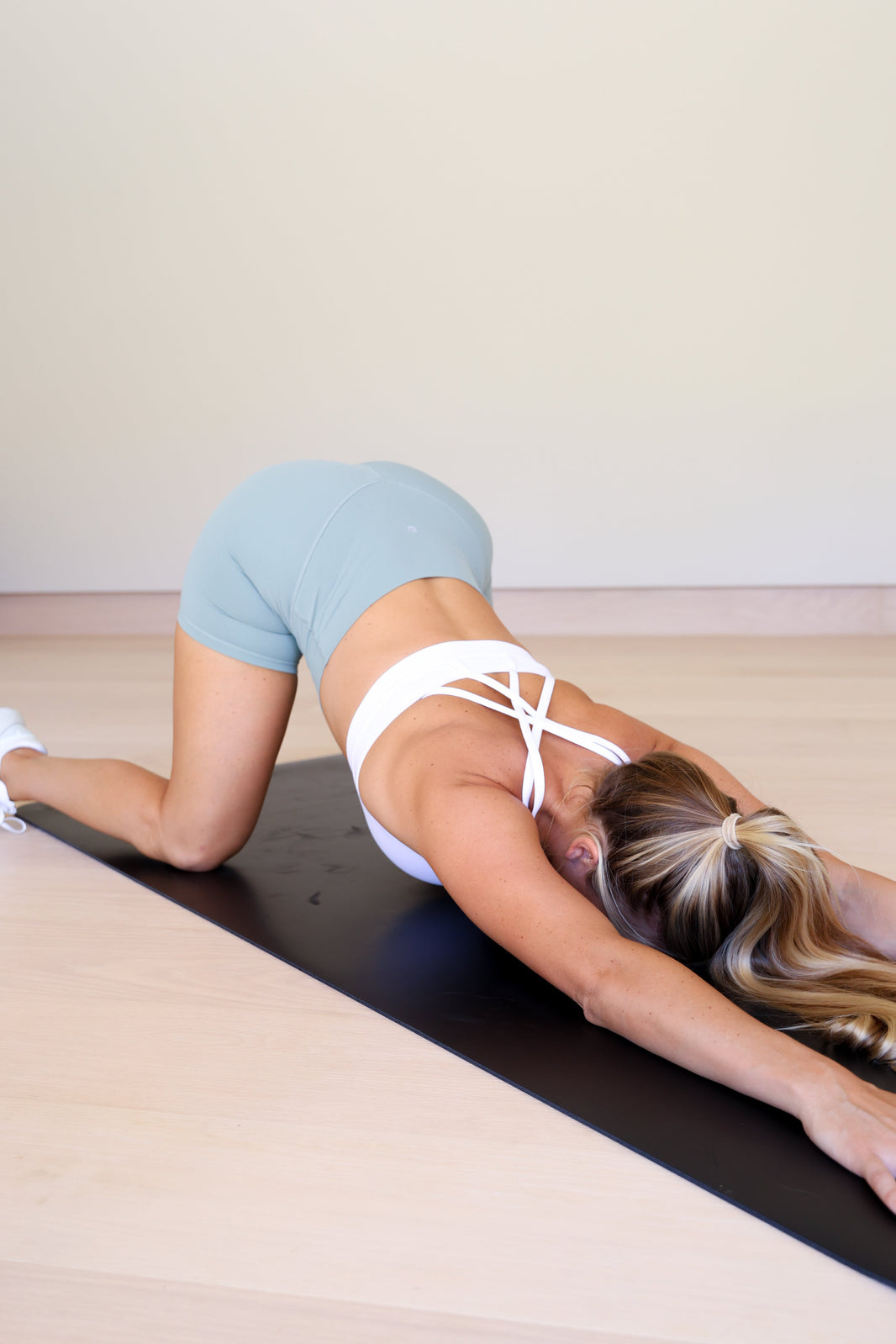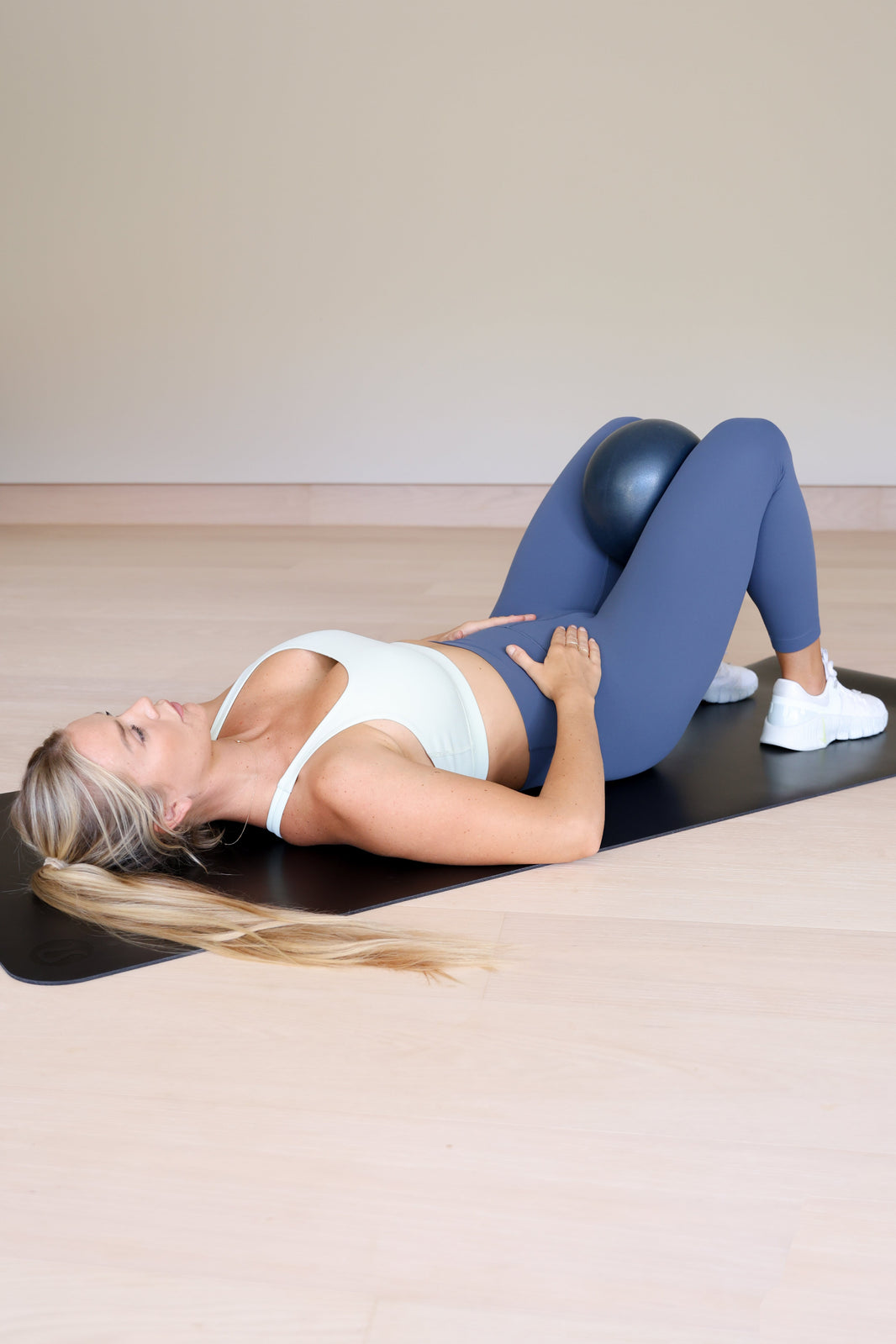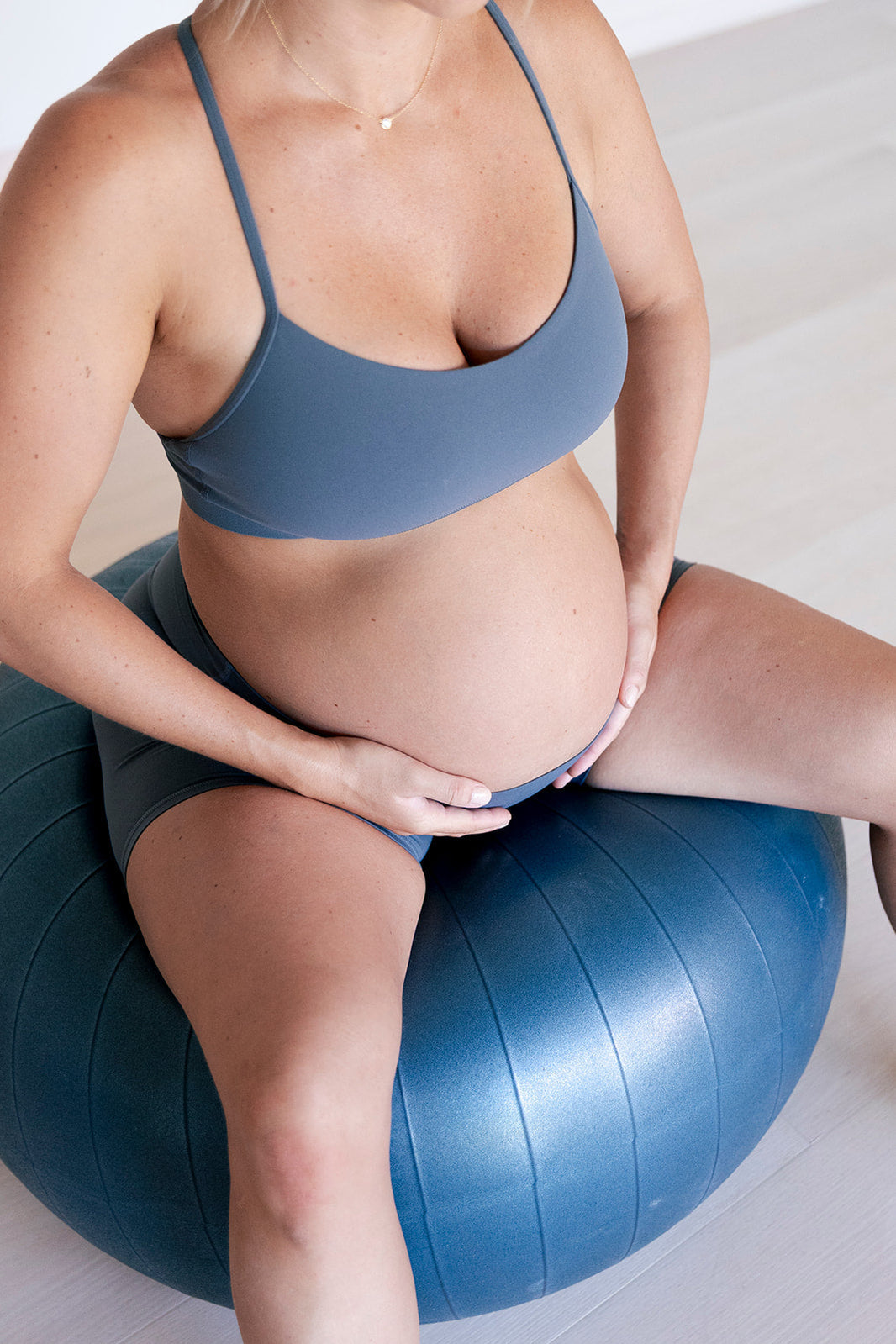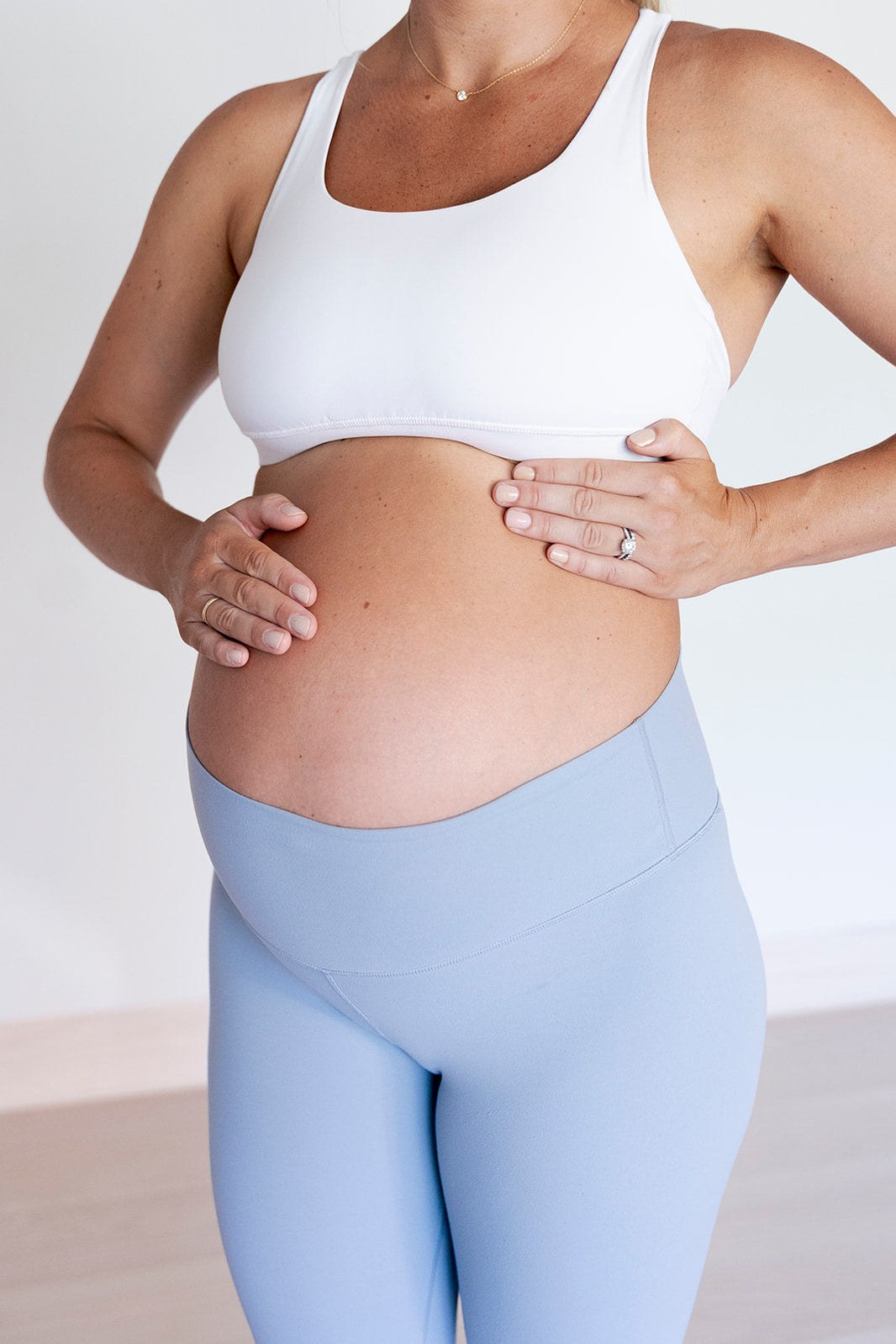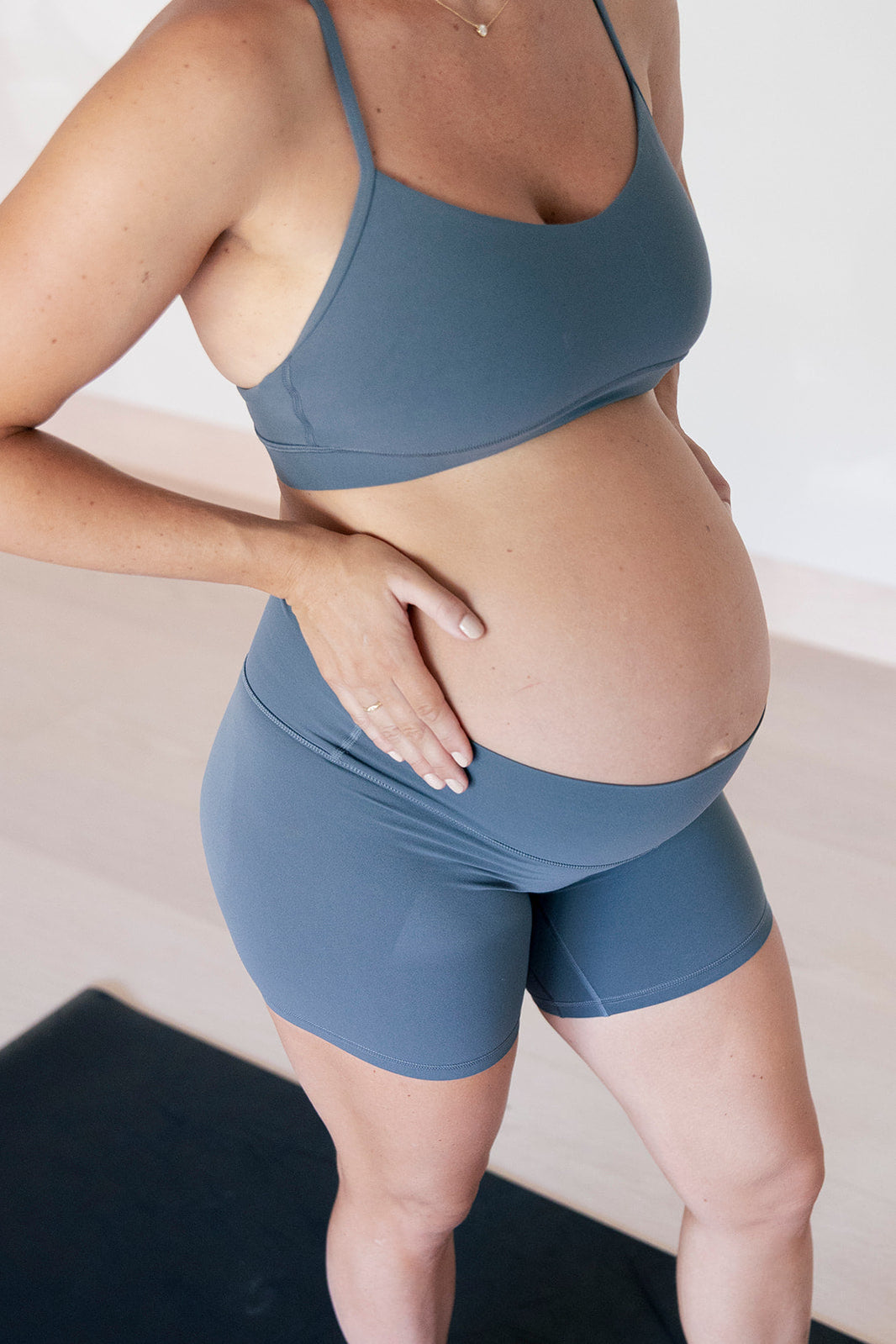As you are moving through labor your pelvis has to open and expand in a variety of ways as baby is moving down the birth canal and out of the body. As you are progressing through different phases of labor you are opening up different portions of our pelvis. If you want to learn more about the different phases of labor you can read this blog post.
Phases of labor
1. Early labor: This is where contractions are 5-20 min apart and you are dilated 1-3 cm
2. Bridging: This is where contractions are 3-5 min apart and you are progressing to 3-6 cm of dilation
3. Active Labor: This is where contractions are about 2-4 min apart and you are progressing to 6-8 cm of dilation
4. Transition: This is where contractions are 2-3 min apart and you are at 8-10 cm of dilation
With each of these phases of labor, baby is progressing down into the pelvis and preparing to exit your body. Finding positions to open up various parts of the pelvis can help with encouraging some pain management, but also encourage babies descent down and out. Thinking of our pelvis, we want to break it up into 3 parts.
Opening 3 levels of the pelvis during labor
1. Pelvic inlet: The top portion of our pelvis where baby starts to descend down and into our pelvis.
2. Mid pelvis: Just what it sounds like, the middle portion of the pelvis. A typical place where baby’s descent get more stagnant and sticky.
3. Pelvic outlet: The bottom portion of the pelvis. The last portion of the pelvis baby has to make its way down and out of the body.
Let’s talk positions that we want to get into to help with descent of baby through each of these portions of our pelvis as we are progressing through all these phases of labor.
Open the pelvic inlet to help baby engage into the pelvis
During early labor and bridging, we want create more space in the pelvic inlet (the top of the pelvis). The best way to do this is to find positions where your hips are more externally rotated and pelvis is tucked under slightly.
By performing a posterior pelvic tilt, where the front of the pelvis tilts upward and the tailbone tucks under and externally rotated hips, the angle of the pelvis changes. This tilting action with hip external rotation helps with narrowing the lower portion of the pelvis to assist in widening the upper portions of the pelvis. This increases the dimensions of the pelvic inlet, creating more room for the baby’s head to enter and navigate through the birth canal. Tucking the tailbone under with a posterior pelvic tilt can also help align the baby’s head with the widest part of the pelvic inlet. This alignment is crucial for baby to engage properly and begin their descent.
Top positions for pelvic inlet opening:
1. Deep supported squats with hips and knees out wide
2. Sitting on a Physioball with knees out side and moving from pelvis tucked back to tucking under
3. Side-lying with legs supported on a peanut ball: knees above hips and hip extended with knees behind hips
Open the mid pelvis to help baby descend
During active labor we want to prioritize asymmetric pelvis positions to open up the mid pelvis. Baby is starting to rotate to prepare for exiting and the bony landmarks of the pelvis also need to rotate because this helps baby shimmy down the birth canal.
When the pelvis is positioned asymmetrically, it changes the shape and size of the pelvic canal, distributes pressure more evenly throughout the pelvis to reduce the likelihood of the baby getting “stuck” at certain points, and can make the pelvic joints more flexible and responsive, further aiding the baby’s descent.
Positioning where one leg is in hip flexion while the other is in hip extension or positions that are going to shift one side of the pelvis up and the other side of the pelvis down can help with progressing baby down the mid pelvis.
Top exercises/ positions for mid pelvis opening:
1. Stair stepping sideways or curb walking
2. Forward or backward lunges
3. Offset positions on all 4’s with one leg propped up on a yoga block and shifting your weight from right to leg.
Open the pelvic outlet to help baby exit
During the transition phase of labor we want to work on pelvic outlet opening. This will allow baby to make their way down and out the last portion of the pelvis. As baby is moving into its final descent it has to move past the sacrum, tail bone, the ischial tuberosities (sit bones), pubic bone, and press down and out of the pelvic floor muscles and skin around the introitus (external portion of the vagina.)
In order to do this optimally we want to find positions in more hip flexion, hip internal rotation, and anterior pelvic tilt position which will help create opening of the bottom portion of the pelvis. When the pelvis tilts anteriorly, the pubic bone moves forward and the sacrum and tailbone to move backward. When the sacrum and tailbone move backward, they move away from the birth canal, reducing any obstruction. This movement increases the diameter of the pelvic outlet, providing more room for the baby’s head and shoulders to pass through.
Finding this position of hip internal rotation allows for your ischial tuberosities to open away from on another, allowing for better slack and movement in the back pelvic floor muscles called your levator ani muscles. This position allows for more relaxation and movement of the pelvic floor muscles to accommodate babies head and body while also helping to move the ischial tuberosities out of the way so baby doesn’t have any bony obstructions to move past.
Hip flexion further puts those levator ani muscles in a more slacked position to remove muscular obstruction for babies descent out of the vagina. This position of hip flexion, internal rotation and anterior pelvic tilt together is the most optimal position for pelvic floor muscle relaxation, improving the diameter of the opening of the lower pelvis, and clearing the moveable portion of the bony pelvis out of the way; which can again, reduce any obstruction for babies entrance into the world.
Learning how to better open the lower portion of the bony pelvis and relax the pelvic floor muscles can help prevent perineal tears, reduce stalls in this final portion of labor caused by muscular tightening or bony pelvic obstructions, and allow for a smoother and more comfortable portion of this final phase of labor.
Top positions of pelvic outlet opening for pushing:
1. Sidelying with using a peanut ball: Have knees flexed up, foot higher than knee, and low back arched slightly
2. All 4’s rocking: Have feet/ankles out slightly wider than knees and low back slightly arched as you are rocking your bottom forward and backward
3. Side lunge with birth ball support: Having one leg down and the other leg forward, work on having down leg knee slightly rotated in and foot/ ankle out wider than the knee. Use a birth ball for upper body support and work on arching low back, thinking like your flaring your tailbone behind you.




